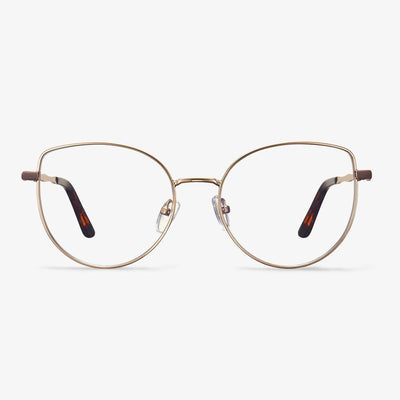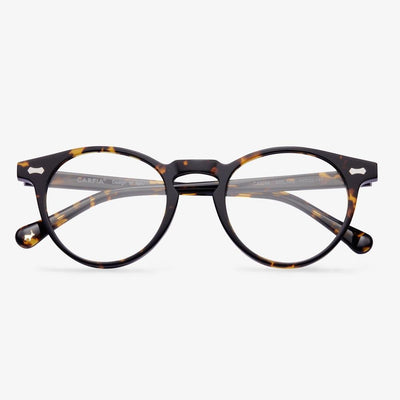What color lenses are good for driving?
The optometrist reminded us that it is not advisable to choose pink, purple, light blue, and other colors with obvious decoration effects for driving sunglasses. These colored glasses basically cannot protect the eyes. In addition, they may change the color and cause chromatic aberration. Generally speaking, you should wear brown and gray glasses when driving. The brown lens can filter out a lot of blue light, which can effectively improve visual contrast and clarity. The gray lens can absorb any color spectrum in a balanced manner and will not produce obvious chromatic aberration after wearing.
Nowadays, the colors of lenses for sunglasses on the market are dazzling. Many people only consider whether they look good when choosing colors, and do not pay attention to the impact of lens colors on vision. When choosing sunglasses, we should not only pay attention to their decoration but also pay attention to their protective function for the eyes. We should avoid using blue lenses when driving because it will make us unable to distinguish the color of the traffic signal lights.
Why Are My Progressive Lenses Blurry?
Progressive lenses are optical lenses designed for simultaneous correction of far, medium and near. Progressive lenses use polishing technology to achieve a gradual transition between the two focal lengths. With progressive lenses, people do not have to switch their glasses for different purposes.
However, with the usage of progressive lenses, there are some problems of progressive voices. One of the most commonly reported side effects of progressive lenses is blurry or fuzzy peripheral vision. The blurriness is usually most noticeable through the lower portion of the lens and to the left and right of near and immediate zones.
The Disadvantages of Trifocal Glasses
Here, we will show you the disadvantages of trifocal glasses. If you wear the trifocal glasses for the first time, you may spend some time getting used to them. Adjusting to wearing trifocal glasses can take some time. The different fields of vision can make them disorienting at first, but over time you will get used to wearing them and your eyes will naturally move to the prescription they need for the task at hand. You may be interested in this post: How Long Does It Take to Get Used to New Glasses?
How do I choose the right glasses frames?
Choosing a frame is largely a matter of personal preference. However, in addition to the style, you need to check the comfort level to see if there are problems like ear clips, nose compression, skin irritation, and so on. Please note that if you are highly short-sighted, try full-frame glasses, because full-frame glasses can hold heavier lenses more reliably. Below are a few easy ways to determine which frames would best flatter your face and show off your style and personality.
Step 1: Identify your face shape. Identifying your face shape is a good place to start when it comes to learning how to select frames which will suit your face shape.
Step 2: Choose colors that complement your skin tone. If you have a cool-colored skin tone, opt for shades of black, gray, and blue. If your skin tone is warm, you would benefit from warm colors, such as tan, pink, and red. As always, when you learn how to select frames, it is easy to know which colors suit your skin.
Step 3: Consider your way of living. When considering how to select frames for your lifestyle, one of the most important things is to make sure the frames fit at the bridge of your nose. This will allow your glasses to stay put better. If you exercise often, comfortable, sturdy frames are a must. If you want to look the part at an important business meeting, you can choose stylish frames with a variety of angles. If you need sunglasses for the beach, go for soft, colorful frames that will complement your relaxed vibe.
Step 4: Flaunt your personality.Frames are the perfect way to show off who you are and your personality. In the process of learning how to select your frames, you cannot forget to choose those that show off your personal style. You can find the perfect shapes, colors, or patterns, but those qualities mean very little if you aren’t comfortable.
They can reduce glare.
They can absorb blue atmospheric scattering and provides more contrast. When performance is your top priority, the right lens tone can give you the results you want. UV rays are blocked by a special coating on the lenses. And inferior sunglasses not only cannot hold back ultraviolet rays but let lens permeable luminosity drops seriously, making pupil greens. Ultraviolet rays can shoot in large quantities instead, your eye is damaged.
The shape of the lens is also important.
Aviator and cat-eye glasses should be avoided, as both will cut off the base of the prescription, resulting in poor reading vision. Instead, they should opt for shorter frames with rounded edges, such as bull horn frames, vintage wingtips, round frames, and oval frames.
How much does it cost to add the blue light filter to glasses?
Based on the difference in the impact of blue light of different bands on the human body, the blue light transmittance of each band of the product is separately required. For example, in the range of 415-445 nanometers, the light transmittance should be less than or equal to 80%, and above 445 nanometers, it should be greater than 80%. In this way, the anti-blue light products can be restricted, which can effectively shield the blue light that poses a health and safety risk to the human body, but also allows the blue light of the waveband that regulates the human body's circadian rhythm to be effectively transmitted.
Anti-blue glasses are not suitable for everyone. It is only suitable for people who use electronic products for a long time, not for people who are visually fatigued, and teenagers should not wear them for a long time. Furthermore, anti-blue glasses should not be regarded as a 'talisman' and use your eyes uncontrollably after wearing them. Therefore, when using electronic equipment, people must abide by the laws of nature, ensure the normal rest of the eyes, and maintain eye health.













































